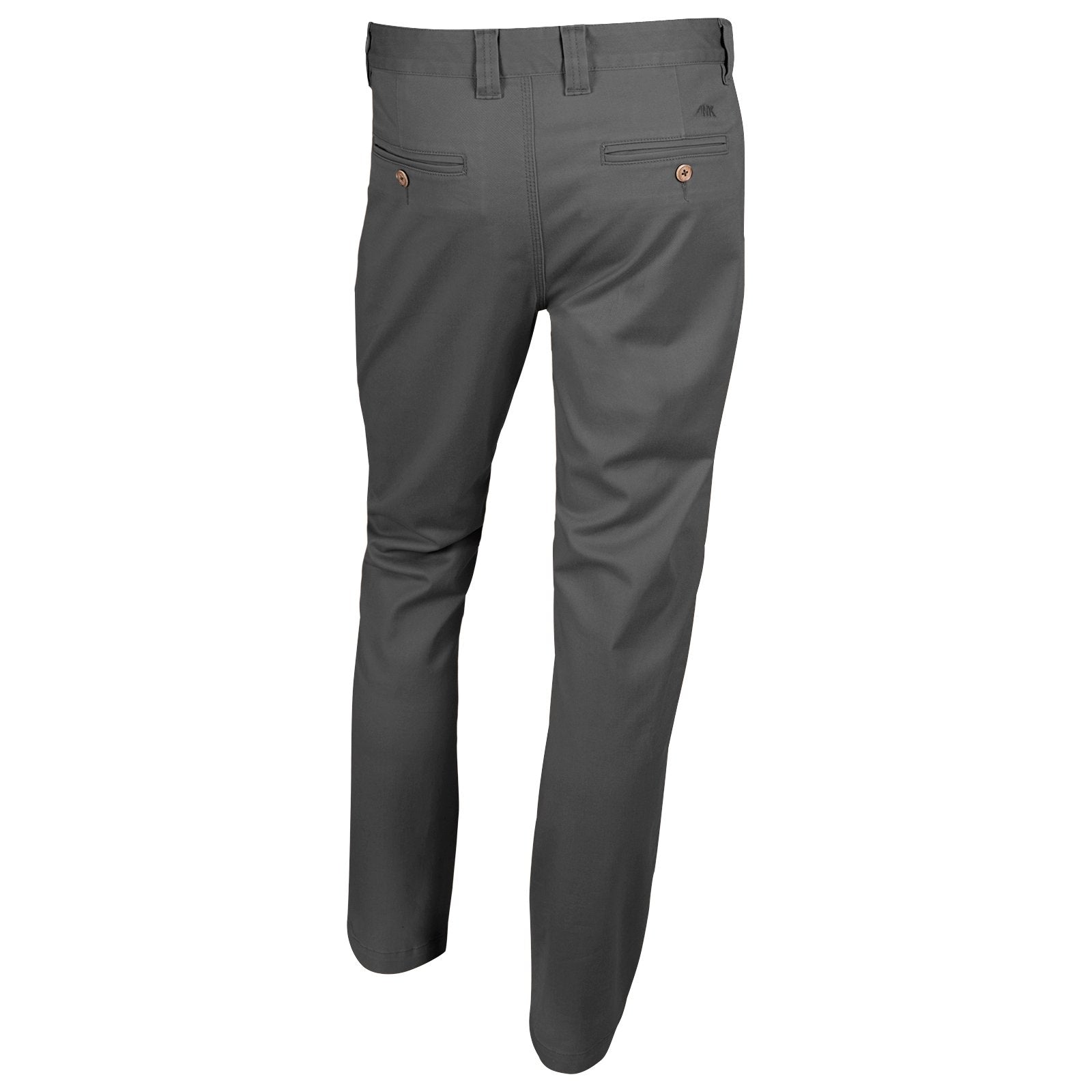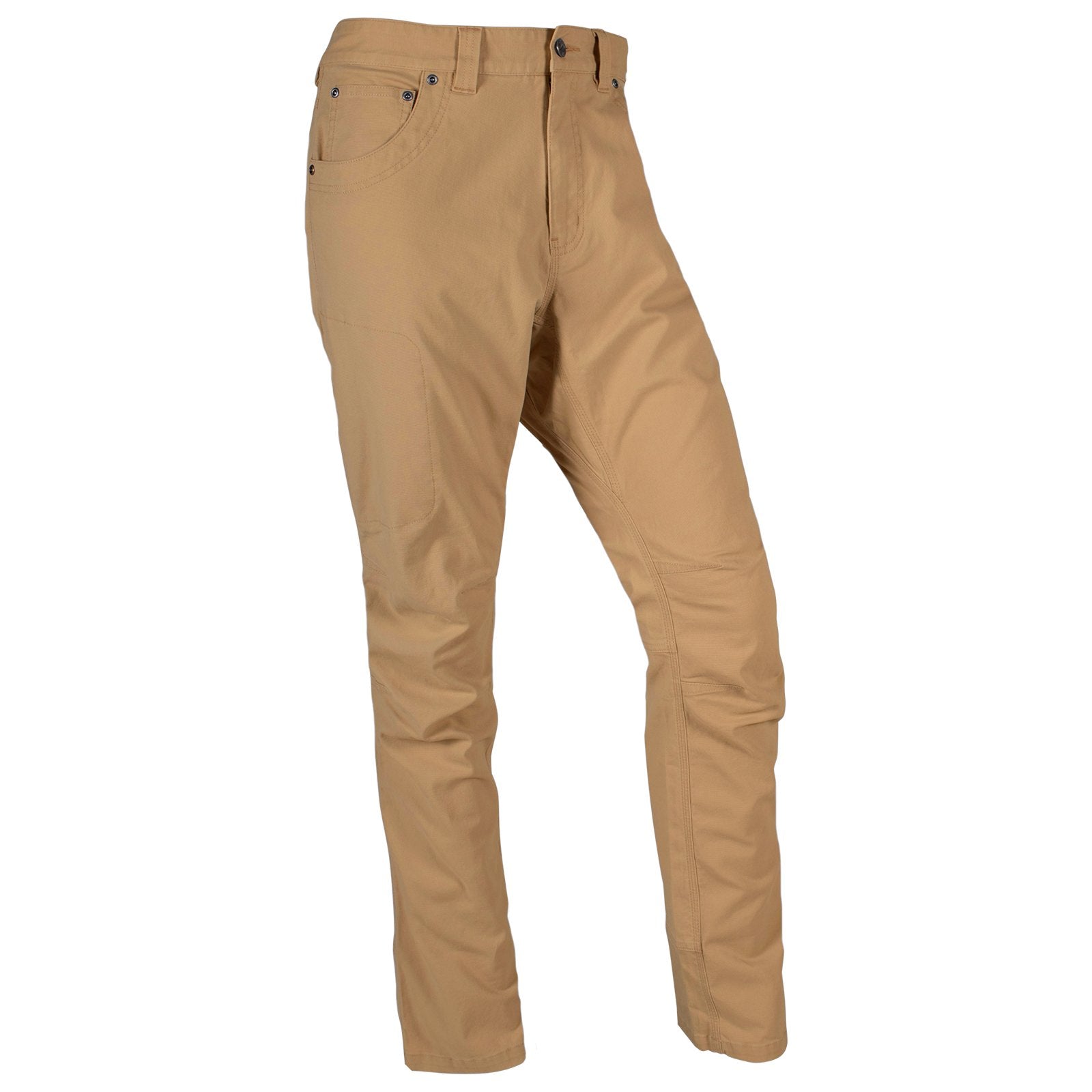We make pants. Damn fine ones if you ask us. Whether you call them trousers, slacks, pants, britches, breeches, breeks, trews, cacks, or any of the myriad other names available to this ubiquitous piece of clothing comprised of material covering each leg separately from waist to ankle and bound around the waist, you may have never thought about the history of pants.
So, buckle up, we’re about to get into some obscure, and fascinating, history.
The oldest known pant
The oldest known physical example of pants was discovered in the Tarim Basin of China. Carbon dating estimates that the two pairs are more than 3,000 old. Further examination of the garments indicated that the pants were constructed of only 3 pieces of fabric with no obvious stitching; the legs and crotch pieces were joined on the loom meaning that these were especially bespoke pants. Hints of belt loops were also discovered.

(Credit: m. WAGNER/GERMAN ARCHAEOLOGICAL INSTITUTE)
These wide, straight leg pants were discovered in a region associated with the Silk Road from your school history lessons. Vast amounts of commerce, war, and migrations of peoples have marked this region that was known as the Western Region until the 1880’s. It stands to reason that given the volume of trade and conflicting influences this region has experienced over the millennia that even older pants could be discovered in the arid plains of the Tarim Basin.
The Achaemenid Empire city of Persepolis, itself a UNESCO World Heritage Site, found in modern Iran has recorded examples of artwork and rock carvings dating to the sixth century BC showing nomads of both sexes wearing pants. Ancient Greeks referred to these garments as anaxyrides when worn by nomads of more eastern Asia, and sarabara for the Scythian and Pontic Steppe peoples. The primary differences are the materials used and the width of each pant leg. The Ancient Greeks generally disdained pants, calling them all thulakos, or sack, and preferred to wear tunics and robes.
ROMAN INFLUENCE

The Romans continued with the Greek tradition of wearing a himation in various forms. Himations could be worn as a stand-alone garment and are typically featured in Biblical representations of women’s dress, in particular, the Virgin Mary. Roman togas are a variation of this noticeably non-pants garment. But as the Roman Empire expanded into the colder climes of Europe and the British Isles soldiers adopted the Braccae and Feminalia worn by the Barbarians we know as Celtis and Teutons. Early examples of trews appear on Volubilis’ triumphal arch which shows a Caledonia Pict prisoner wearing tartan trews. Trews would remain a staple of Scottish Highland dress for centuries and are likely the origin of the word trouser.
As the Roman Empire waned the proliferation of pants continued. Now made from leather, wool, cotton, or silk and featuring a tight cuff at the ankle or with foot coverings (just like your footie pajamas from childhood) and were known as brais. Charlemagne wore pants under his ceremonial tunics so frequently that it became fashionable for men’s pants to not be seen; as the pants became briefer (shorter, and perhaps the root of the modern underwear term), they were worn in conjunction with medieval hose or stockings.
pants through the ages
By the fourteenth century, we have reached what could be considered a fashion low tide. Sure, the materials and colors were vibrant and unique. Men’s leggings were frequently high-waisted and exceptionally tight. So tight that undergarments were done away with and were once again generally a three-piece construction- 2 independent legs and the separate fastening codpiece.
In 1701 Russian Tsar Peter the Great issued his new dress code requiring Russian men to wear pants. Only the clergy and some peasant farmers were excluded from the nationwide mandate to adopt “Western dress” which included guidelines for French or Saxon style shirts and “upper dress” and German style waistcoats, trousers, and boots for “lower dress”. Pants were having a moment even if by royal decree.
Nearing the end of that same century in France, the ankle-length working-class pantaloons became emblematic of the French Revolution while the shorter culottes played the aristocratic foil. Following the revolution in France British fashion advisor and designer Beau Brummel helped move the pantaloon into acceptable menswear known as breeches. Remnants of breeches can still be seen in British court dress as well as in the uniform bottoms of American football players, baseball players, as well as by many competitive equestrians.















Leave a comment